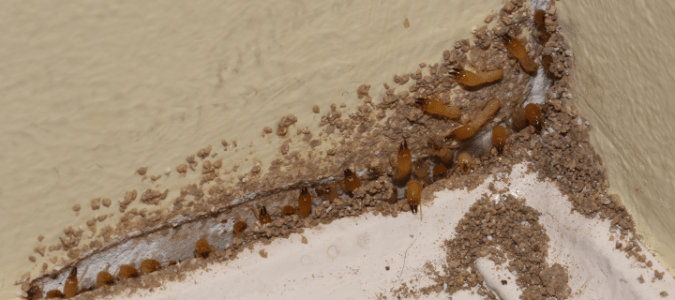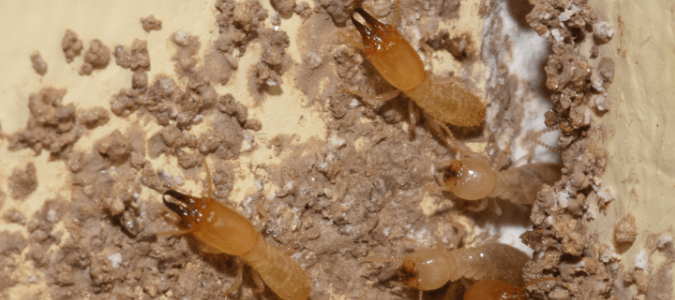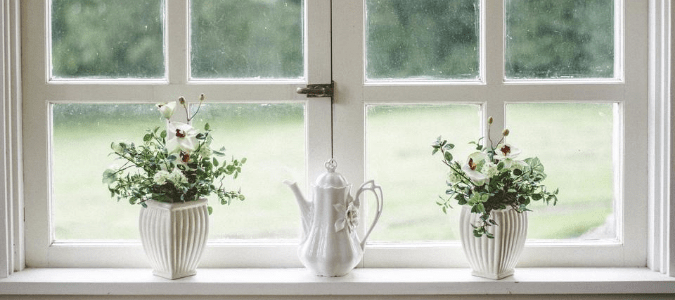As their name implies, drywood termites build their nests in dry wood. In comparison, dampwood termites and subterranean termites need extremely moist environments. Drywood termites commonly nest in wood beams, wall framing and even wooden furniture. Drywood termites typically don’t even need a reliable water source as they can derive enough moisture from the wood pulp that they eat.
Homeowners who suspect they may have a drywood termite infestation should contact a professional. Even a moderate size colony can inflict serious and widespread structural damage and massive expense in a short amount of time.
In fact, termites cause more than five billion dollars worth of damage annually, just in the United States. Unfortunately, most of which is not covered by conventional homeowners’ insurance.
In this article, we’ll take a look at the common signs of a drywood termite infestation, how to identify the various types of drywood termites, their lifecycle, and (most importantly) how to get rid of drywood termites and keep them out of your home!
How to Get Rid of Drywood Termites
The best way to deter drywood termites is to block them from their food sources. Cracks, crevices or other openings in your home or building foundations are an open invitation for them. Any access to the tasty wood framing within should be sealed as soon as possible. Additionally, cut back any tree branches that could lead drywood termites straight to your home.
The unfortunate fact is that termites are essentially impossible to control without professional help. Professionals have the knowledge and specialized equipment to treat these pests.
One of the best ways to prevent extensive damage is to learn the signs of a termite infestation. This way, you can catch an infestation early.
Signs of a Drywood Termite Infestation
Drywood termites, unlike their various cousins, live their lives inside the wood that they feed on. The most common way that infestations are discovered is during the “swarming” stage. This is when great numbers of flying termites are drawn to lights and other illumination. Termites or discarded wings can often be found littering the ground in these areas in the daylight.
Termite excrement, known as frass, looks like small piles of very tiny pellets and can be an indicator of their presence as well. Drywood termites will feed on any form of cellulose and often leave telltale holes with little piles of sawdust around them at the entrances of their excavations.
If you find these signs of termites in your home, or on your property, contact a professional and schedule an inspection as soon as possible.
Note: Termites can also make their way from home to home in furniture, often used, that homeowners purchase and bring home, unintentionally bringing these hidden pests, living in the woodwork, into their home as well.
Before you bring a piece of antique or wood furniture inside, inspect all wood surfaces carefully for termite pinholes. Give the frame a hearty shake or tap it in various locations and look for any wood dust or frass that’s dislodged and falls to the ground.
Also, inspect wood surfaces for any discolorations or recent putty work.
Trust, but verify, right?
What Do Drywood Termites Look Like?
Termite colonies have a hierarchy including a king, queen, soldiers and workers. Each of these castes has a slightly different appearance.
Drywood Worker Termites
Termite sizes range widely, based on the age of the individual insect. They span from a one-quarter inch in young to one inch long in adulthood. Adults are oval-shaped, a bit thicker around the middle, and have six short legs and long, straight antennae. Workers tend to be off-white to tan in color. They can often be confused as white ants.
An average drywood termite colony will have around 2,500 workers.
Drywood Soldier Termites
Soldiers, as you might expect, are larger, stronger, and more aggressive than worker termites. They have darker heads and big, heavy pinchers. The pinchers are designed as the first line of defense against other pests that threaten the colony, most often ants.
Soldier termites will not hesitate to bite a human “intruder” either, though they don’t seek them out for attack.
Drywood Swarmers
Swarmers are the winged adult termites that leave the colony every 2 to 3 years. They fly out of the nest to mate and create a brand new colony.
If you find drywood termite swarmers on your property, either:
- You have an existing colony somewhere in your home that is looking for fresh nesting ground to colonize, or
- An established colony on a nearby property is evaluating YOUR area for its new nest or is already moving in.
Neither are particularly good options.
The Drywood Termite Life Cycle
Termites, like most species of insects including bees and ants, start their life cycle as eggs. They differ from these other species, however, in that they then proceed to grow through three distinct phases (egg, nymph, adult). This is a molting process known as incomplete metamorphosis.
Rather than a solely age-based progression, the termite will progress through these stages based on the population, food stores, temperature, and needs of the colony.
Termite Nymphs
The first stage of the drywood termite’s life cycle, after hatching from the egg, is spent as a nymph. At this stage, it looks much like the adult termite, only smaller. The length of the nymphal stage can vary, sometimes taking months to grow into adulthood.
At this stage in its life, the termite nymph is unable to feed itself and must rely on the worker termites for food.
Mature Termites
As the nymph grows into adulthood, they will molt one final time into their fully grown form. They will form into a worker, soldier, swarmer or vary rarely queens. What they form into is based on pheromones released by the current queen of the colony.
While termites most often expand the colony by building elaborate tunnels through the wood that they feed on, they can also expand by a process known as nuptial flight. Where they swarm out of the colony in random directions, typically at dusk or dawn depending on environmental conditions, to mate.
Termite Swarms
After the males and females pair up they stay together and fly off in search of a satisfactory location to establish a new colony. There, they will burrow a tunnel large enough to accommodate the both of them, seal up the exterior hole, and mate.
Once mated, the original pair never leave the new colony again, which can be as long as 30-50 years! Should the queen termite die early, the king will release hormones that will signal the “queens in waiting” to complete development and take her place.
How To Prevent Drywood Termites
Professional help is usually required to completely eradicate an established termite infestation. However, there are several steps you can take to help make your property less enticing to drywood termites.
- Move all wood, both firewood, lumber, and scrap wood at least 20 feet away from any exterior wall of buildings. (Home, barn, shed, etc.)
- Pull up any stumps and remove any dead trees (fallen or not) from the property.
- Repair, seal, or paint any cracks or crevices that might give termites access to the interior of your home.
- Double paint seams around door or window frames, siding, roof eaves and any exterior access points to the attic or crawlspace.
- Use only treated wood for any repairs, new construction, building upgrades, or add-ons.
- Keep an eye out for the common signs of termites like wings, droppings or pinholes in exterior wood. These are all common indicators that you’re sharing your property with termites.
Whether you’re experiencing an active infestation or looking to prevent future infestations, your best investment is going to be in hiring a professional. A termite control specialist can design a treatment plan specific to your situation.
A termite control expert has the training, experience, and equipment to get the job done right. They can also work with you to develop a pest control plan that’s customized specifically to your home.
ABC Can Treat the Termites on Your Property
Finding termites on your property can be extremely frightening. These pests are destructive and their colonies can hold thousands of members. If you believe you have termites on your property, contact ABC Home & Commercial Services. Our professionals will be able to locate the termite colony and then implement an effective pest control plan. Whether you have drywood, dampwood or subterranean termites, we can help,


